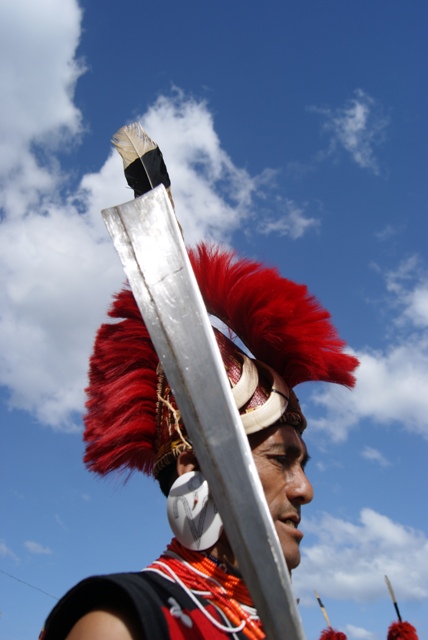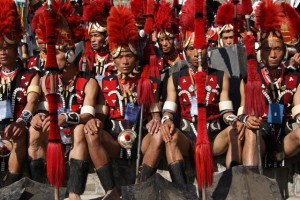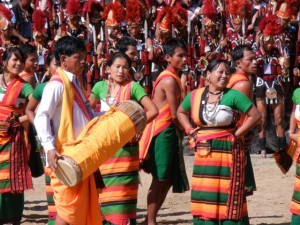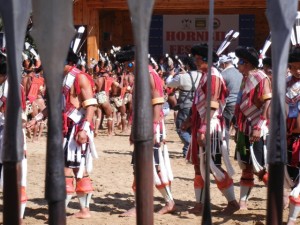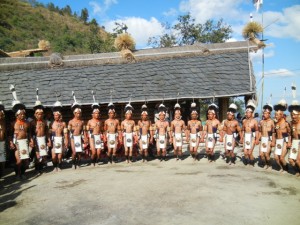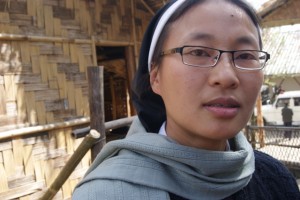“Nagaland? Oh yeah, we are in Nagaland, right?” Another one said. As an apology he added he was Polish.
The Nyalipu or Fish Dance of Konyaks, the Bai-Bin or the post-harvest folk dance of Dimasa, the Kuki’s Sagol Pheikai dance imitating the movements of the wild boar and the hornbill dance of Aos, the arena erupted to yells and yodels pregnant with narration. The enthralling display of sinewy stomping over, the tribes retreated to their respective morungs or huts to much-needed bamboo mugs of rice beer. The rhythmic rampage was to continue albeit on a smaller, more informal scale. Newly oiled hunting guns fired empty rounds in the air – their startle effect creating much merriment among tribe and tourist. The ceremonies of the first day held everybody in awe and left different impressions on different people. Dr Sabine from Frankfurt went to an Ao stall and purchased their typical red and black striped shawl; the remainder of the day she went around proclaiming her love for the tribe and her desire to settle in Nagaland. Sister Katini from Manipur was trying hard not to sway to the drumbeats throbbing out of the morungs. “I am basically a Naga but the state division made me a Manipuri. When I come for the Hornbill, it is basically a homecoming for me,” the sister said starting to sing along.
Music and dance continued with gusto well into late afternoon. Pork was the staple that kept every limb moving. And the rice beer ensured there was no dearth of laughter and camaraderie. New friendships were formed, coordinates exchanged as were promises to keep in touch. Blame the ferment.
 Wanderink recommends: Prefer homestays when visiting festivals as ethnic as the Hornbill – that way you enhance the experience no end. A word of caution for those new to the scene: Treat homestays like you were in your own home: don’t order around, fetch your tea yourself from the kitchen. Always be graceful and don’t be stingy with smiles and ‘thank you’.
Wanderink recommends: Prefer homestays when visiting festivals as ethnic as the Hornbill – that way you enhance the experience no end. A word of caution for those new to the scene: Treat homestays like you were in your own home: don’t order around, fetch your tea yourself from the kitchen. Always be graceful and don’t be stingy with smiles and ‘thank you’.


